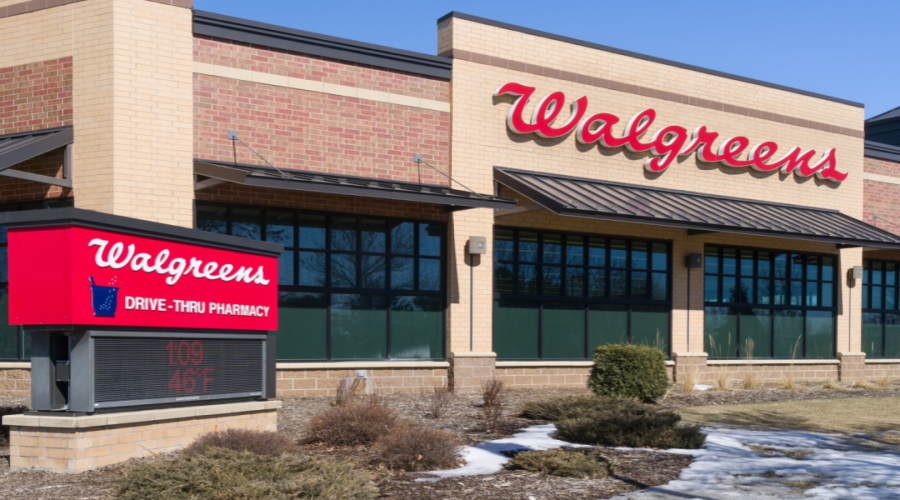Prescription drug costs have been rising for more than a decade. At the same time, your pharmacy profit margins have dwindled. This has strained both patients’ wallets and your bottom line. And as prices continue going up, more cash pharmacies are opening around the country offering generic medications outside of insurance. What’s more, they’re saving some customers hundreds of dollars on their prescriptions.
Cash pharmacies can be a life saver for people who lack prescription coverage. They provide critical access to affordable medication.
Other barriers keeping patients from attaining their medication include distance from the pharmacy and a lack of transportation. However, a cash pharmacy offering direct-to-door delivery could be their saving grace.
Mitchell’s Drug Store in Neosho, Missouri is exactly that. Not only does it offer free delivery to their patients’ doors, but it has also added a cash pharmacy.
“We’ve been in business for over 20 years, and we’ve come to realize that there aren’t a lot of options for people who do not have prescription insurance,” said Tanner Mitchell, PharmD, Mitchell’s Drug Store. “We also started to realize that the insurance model is broken, and a lot of people are being overcharged for their medications and don’t even realize it. That’s when we came up with the idea to start a generic pharmacy. We wanted to better serve this population and improve access to care.”
Mitchell admitted that it wasn’t easy to do. In fact, it took a lot of thinking about how to do it correctly. “We wanted to prove a model of a cost-plus pharmacy on its own. This meant coming up with a different entity. So, we created Mitchell’s Cost Plus Pharmacy.”
In creating Cost Plus, the Mitchell family decided to keep everything separate and created new wholesaler accounts with PBA Health that allowed them to purchase medications at a good price. With that, they were able to accept new patient accounts and stock the generic medications in another area of their store. Their biggest struggle, Mitchell said, was educating the public on Cost Plus, who it may be best for, and how it can save them money.
“There are a lot of other pharmacies in this town, but we don’t have other pharmacies with this model,” Mitchell said. “We started by looking at the demographics of our area to see if it was right for us. Just because it’s right for us, though, doesn’t mean it may be right for other people. However, we did see that we have a higher percentage of the uninsured population in our area. So, we’ve been trying to find ways to help those people as well.”
Prescription insurance is expensive, especially if patients aren’t using it. Then they’re paying a premium for something they’re not using. At Mitchell’s Cost Plus Pharmacy, there is a one-time fee for one-year access, and patients have coverage throughout the year if they become sick, have prescriptions called in, or need any other maintenance medications. They also receive 10 percent off any over-the-counter products, so it’s a low-risk, high-reward concept.
“We’ve seen a lot of people have a much simpler pharmacy experience when they transfer to Mitchell’s Cost Plus Pharmacy,” Mitchell said. “Word has started to spread throughout the town of new ways of doing pharmacy and new ways of receiving care.”
Today, nine out of 10 prescriptions filled are generic medications. And while it’s been quite puzzling for patients, generics are paving a trail with increasing frequency.
- According to KFF, only 5% of prescriptions in 2019 were purchased at a pharmacy’s “cash” (non-insurance) price.
- A study by Prescryptive Health in 2022 reported that 61% of consumers surveyed had paid cash prices for prescriptions even though the drugs were covered by their health insurance.
- In that same 2022 study, 50% of those surveyed living in urban markets said that paying out of pocket is less expensive than using insurance.
How a Cash Pharmacy Can Benefit YOU
Financial Independence
By operating on a cash basis, you reduce dependence on insurance reimbursements, providing more financial stability and control.
Streamlined Processes
Receiving cash transactions simplifies your billing and paperwork processes. This allows you time to focus more on patient care and less on administrative tasks.
Faster Service
When you don’t have the need to navigate insurance-related procedures, cash transactions can speed up the dispensing process. This leads to faster service for patients.
Flexible Pricing
You can set your own pricing for medications and services, which could attract a broader customer base with competitive rates.
Customer Relationships
Having a cash-based model may encourage stronger pharmacist-patient relationships. This is because it allows for more personalized interactions and discussions about medications without the constraints of insurance protocols.
Less Administrative Burden
Dealing with insurance claims and paperwork can be time consuming. Cash pharmacies may experience less administrative burden, allowing pharmacists to spend more time caring for patients.
Innovation Opportunities
If your pharmacy is operating on a cash basis, it may have more flexibility to explore innovative services or integrate technology solutions that enhance the overall customer experience.
Transparent Pricing
Cash transactions typically involve transparent pricing, helping patients understand the cost of medications without the complexities of insurance coverage.
Larger Profit Margins
With a direct cash model, you could retain a larger portion of the revenue generated, which could potentially lead to increased profit margins compared to relying on insurance reimbursements.
Adaptability
With a cash-based pharmacy, you can adapt more readily to changes in the healthcare world, regulatory environment, or shifts in market dynamics without being overly constrained by insurance-related considerations.
The advantages of cash pharmacy may sound great, however, don’t immediately dive in. You need to carefully evaluate the needs of your community and consider the potential challenges associated with transitioning to a cash-based model.
Mitigating DIR Fees
Direct and Indirect Remuneration (DIR) fees have been one of independent pharmacies’ biggest concerns for years. With Pharmacy Benefit Managers (PBMs) under pressure from regulators and with policymakers on their backs, these insurers are in overdrive trying to make people believe they don’t need supervision or reforms, while carrying on with tactics that make it hard for patients to access care and independent pharmacies to keep their doors open.
Tim Mitchell, RPh and owner of Mitchell’s Drug Store, stresses the enormity of the DIR hangover (the higher up-front DIR fees coupled with lower patient copays leading to cash-flow issues and financial difficulties). “It’s a serious issue and people need to take it seriously and be ready for it. We need to invest in forward thinking and doing things differently. For us, Cost Plus was one of those things,” said Mitchell. “But we’re also looking at opening a clinic, doing point-of-care testing, and other innovations that will create more revenue streams for us.”
Mitchell’s stores have worked on mitigating their DIR fees by moving them to patients who qualify for long-term care at home. The long-term care at home doesn’t get charged DIR fees because the patients have more complicated situations.
“The dollar investment here is low compared to your normal pharmacy. The clinic is going to have fairly low overhead as well. It’s not a high-margin return on investment. But it is a return. What we’re doing right now in traditional pharmacy is typically negative margin. So, we’ve got to be able to change that process,” Mitchell said. “You can’t get rid of everything, but you can mitigate it. By mitigating, it might enable you to have some cash in the bank when the double DIR happens.”
According to a survey by the National Community Pharmacists Association (NCPA):
- 98% of respondents are concerned about the upcoming DIR hangover and the effect it will have on their pharmacy.
- 70% of independent pharmacy owners are concerned about upcoming cash flow challenges resulting from changes to federal policy effective January 1, 2024.
- 85% of respondents are taking steps now to prepare for DIR hangover. 64% are setting aside cash.
- 42% are looking into loan opportunities to help get through the hangover period.
As an independent pharmacist, you are an inventor of your craft. Be sure to stay informed on the latest news and developments with DIR changes. Have a solid financial plan in place, and look for ways to offset fees and set up additional revenue streams. Preparing now will help you and your pharmacy thrive in 2024.
Strategies TO Lower DIR Fees
Mitigating DIR fees in your pharmacy can be a challenge. Here are some strategies you might consider
- Documentation and Transparency
Maintain accurate and detailed records of transactions, prescriptions, and patient interactions. Clarity in your pharmacy’s operations can help dispute unjustified DIR fees. - Adherence Programs
Starting medication adherence programs can improve patient compliance. Demonstrating efforts to enhance patient outcomes may lead to better negotiations with PBMs. - Technology Use
Utilize technology to enhance efficiency in prescription processing and documentation. Automated systems can help streamline operations and reduce errors, which can potentially affect DIR fees. - Evaluate Networks
Regularly assess your pharmacy’s participation in PBM networks. Analyze the impact of network contracts and explore alternative network options if possible. - Follow Legislative Advocacy
Stay up to date on legislative efforts that are aimed at addressing DIR fee issues. Engage in industry advocacy to influence policies that impact independent pharmacies. - Educate and Train
Keep your staff informed about legislative efforts that are aimed at addressing issues with DIR fees. With proper training, you can help ensure compliance and minimize activities that could contribute to higher DIR fees. - Explore Specialty Pharmacy Opportunities
Incorporate specialty pharmacy offerings to diversify your services. This can open up new revenue streams and potentially reduce the impact of DIR fees.
While these strategies may not eliminate DIR fees entirely, they could help mitigate their impact. For personalized advice on your specific circumstances, consult with industry experts or legal professionals.
Opening a Cash-Only Clinic
Mitchell’s Drug Store is set to open a cash-only clinic from the ground up to help people by driving down drug costs. The clinic will have a registered nurse who will be able to care for patients with regular chronic and acute conditions.
“It’s the same concept as what we’re doing with Cost Plus Pharmacy, but it complements it because the idea is you’re taking out any of the middlemen that could drive up fees,” said Lacy Epperson, PharmD, Mitchell’s Drug Store. “I call it the insurance you can’t live with or live without.”
Starting the cash-only clinic as a virtual-only option is the best way to introduce it to the community, Epperson said.
“For one, we have to think about our location and who we’re going to service. Then, we need to think about the associated risk with opening a clinic. We don’t want to staff a nurse just to sit there without patients. So, while we grow that population and grow our memberships, then we can look into transitioning to a more in-person clinic. So, it’s a low-risk option for us,” she said. “The most unique thing about what we’re doing is that we have a perfect setup for a healthcare hub to take care of our patients.”
In addition to a cash-only clinic, Epperson said they’re also adding cognitive testing to their services. It’s called Cognivue, and it’s a new, computerized cognitive assessment device that’s based on FDA-cleared technology.
“We get a lot of questions about brain health and supplements surrounding brain health, so we decided to include cognitive testing with the rest of our services as part of the healthcare hub,” she said. “With the test, we can define where the patient is, and it helps support our recommendation as well as potentially finding an early intervention for cognitive issues.”
The test is not a diagnostic tool, per se, but it is an advanced point-of-care test. The patient gets results and can take it back to their physician’s office.
“Right now, we’ve been focusing on cash-only services. We’re finding it to be way more convenient for the patient as well,” said Epperson. “For us, the cash model has been working. Maybe it’s not a sustainable idea, but for right now it is, and that’s the easiest way for us to implement something quickly. We don’t have to put a lot of effort into training staff on medical billing or things like that. It doesn’t take any extra steps, so it’s been very exciting.”
From the Magazine
This article was published in our quarterly print magazine, which covers relevant topics in greater depth featuring leading experts in the industry. Subscribe to receive the quarterly print issue in your mailbox. All registered independent pharmacies in the U.S. are eligible to receive a free subscription.
More articles from the December 2023 issue:
- New FDA-Approved Weight-Loss Competitor
- Your Pharmacy Online
- Why You Need an IVR System
- Detecting Early Cognitive Decline
- Making Room for Skin Care
- Helping Patients Save
- Nationwide Chain Closings
- The Benefits of Cash Pharmacies
A Member-Owned Company Serving Independent Pharmacies
PBA Health is dedicated to helping independent pharmacies reach their full potential on the buy-side of their business. Founded and run by pharmacists, PBA Health serves independent pharmacies with group purchasing services, wholesaler contract negotiations, proprietary purchasing tools, and more.
An HDA member, PBA Health operates its own NABP-accredited warehouse with more than 6,000 SKUs, including brands, generics, narcotics CII-CV, cold-storage products, and over-the-counter (OTC) products — offering the lowest prices in the secondary market.












